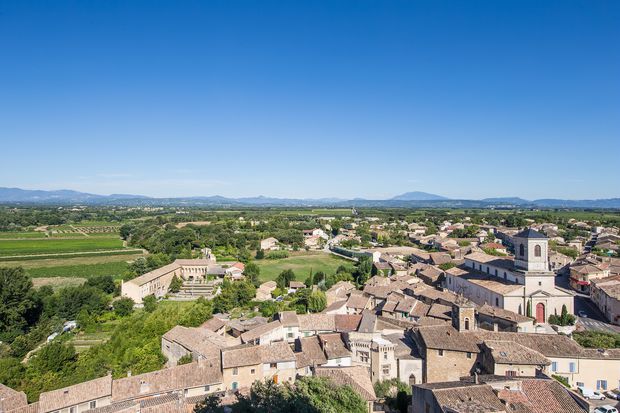
Three new appellations awarded Côtes du Rhône Villages (with Geographical Names) status
France's second largest AOC winegrowing region has promoted three new villages within the appellation hierarchy.
France's second largest AOC winegrowing region has promoted three new villages within the appellation hierarchy.
Starting with the release of the 2016 harvest, the following will be able to use to use the Geographical Names of Côtes du Rhône Villages: Côtes du Rhône Villages Sainte-Cécile, Côtes du Rhône Villages Suze-la-Rousse and Côtes du Rhône Villages Vaison la Romaine (formerly Côtes du Rhône Villages without the Geographical Name).
New cuvées can be marketed from 2017 and available in red only.
The Côtes du Rhône family has continually expanded since being granted AOC status in 1937, reclassifying rankings when necessary.
The AOC Rhône wine region is situated in the Rhône valley in Southern France and is home to prestigious wine-making villages such as Châteauneuf-du-Pape in the southern Rhône.
The northern sub-region produces red wines from the Syrah grape, sometimes blended with white wine grapes, and white wines from Marsanne, Roussane and Viognier grapes.
The southern sub-region produces an array of red, white and rosé wines, often blends of several grapes as in Châteauneuf-du-Pape.
It is the second largest French AOC winegrowing region, both by surface area and production volume.
It encompasses Côtes du Rhône Regional, Côtes du Rhône Villages, Côtes du Rhône Villages with Geographical Names and Côtes du Rhône Crus.
"This is a great day for us. We have been working up to this since 1997," said Marc Besnardeau (Domaine des Grands Bois), spokesperson for the CDRV Sainte-Cécile appellation.
The CDRV Sainte-Cécile appellation has three cooperatives and fifteen individual wineries.
Similarly to other southern Côtes de Rhône appellations, CDRV Sainte-Cécile is notable for the predominance of Grenache (68% of planted area).
Syrah follows with 14%, Mourvèdre with 8%, and then finally Carignan and Cinsault.
Towards the north, the soil is made up of clay and limestone, while further south, vines grow in rounded limestone pebbles on a bed of sandy clay.
Marc Besnardeau added: "The wines show a vibrant, intense colour with hints of garnet and violet, and distinct flavours of red fruit. The palate is well-structured with a fresh, fruit-driven attack, a note of spice on the finish and silky-smooth tannins. They will pair beautifully with game birds, grilled meats or any traditional Provençal cuisine."
Known for its Wine University, soils in the CDRV Suze-la-Rousse appellation are diverse, some stony with rounded pebbles, others comprising chalky clay.
CDRV Suze-la-Rousse consists of two cooperatives and 20 or so private wineries.
The main varietals are Grenache (60%), Syrah (20%) and Carignan (12%).
The six cooperatives and dozen or so private wineries of the AOC Côtes du Rhône Villages Vaison-la-Romaine use traditional southern Côtes du Rhône varietals Grenache (70%) and Syrah (30%), both of which are highly aromatic, showing the full potential of this coolish area - and also Mourvèdre.




